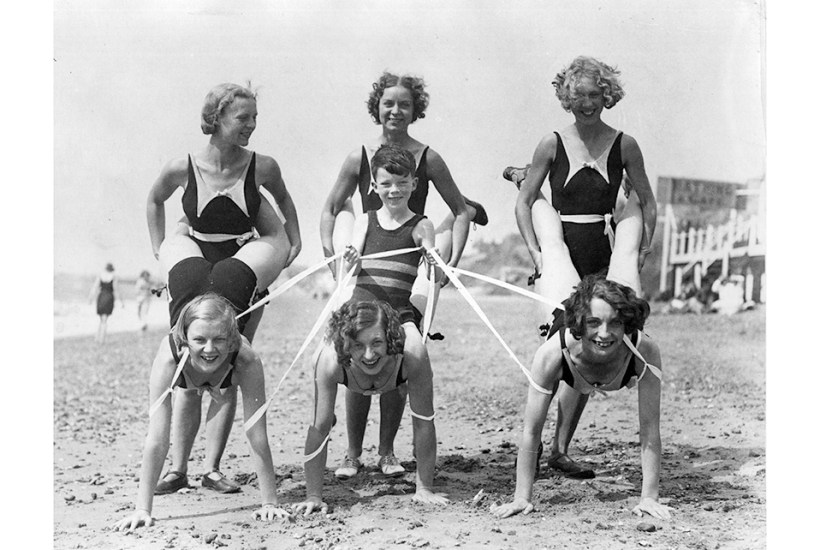Apparently much of the notoriety – or perhaps by now it has become allure – of Essex is my fault. In 1990, weeks before Mrs Thatcher was defenestrated, I wrote an article in the Sunday Telegraph called ‘Essex Man’, in circumstances that Tim Burrows describes entirely accurately in this exceptionally well-written and intelligent book. Although the Iron Lady was about to be history, the part of England that had come to exemplify her achievement and her legacy was throbbing with capitalist energy more than ever – which motivated the profile of Essex Man and his hard work and ability to seize opportunities in a society where native ability counted for more than class. From that came The Only Way Is Essex, jokes about Essex Girl (thanks not least to the great Richard Littlejohn, who differentiated her from a shopping trolley by asserting that the latter had a mind of its own), and the notion that, with black people and the Irish no longer available as targets of humour, Essex would fill the gap.
Burrows is an Essex native who moved back to Southend to avoid the absurdities of the London property market. He has an implicit understanding of the temper of the great diaspora of cockneys who moved out to the south of the county after the war, though some had already left East and West Ham after they became industrialised at the end of the 19th century. He also understands the pull of the quiet emptiness of the marshlands that surround the coast, and of the islands and creeks in the estuaries of the Thames, the Crouch, the Blackwater and the Colne.
Essex has a vast acreage of picture-postcard villages, a few of them near the marshes on the Dengie peninsula and in the largely unknown corner of the county north of Southend, but most of them north of Chelmsford, populated in part by what in Essex passes for old money. That substantial area of the county is one with which Burrows does not appear unduly concerned. His fascination is for the new towns of Harlow and Basildon and the social experiment they represent; and for the inhabitants of the housing estates that have sprung up over the past 50 years in this constantly expanding county, around its old towns and villages.
Essex was, in the last century, sliced in two by the expansion of London. There was that substantial part along the north shore of the Thames that was colonised by Londoners, and whose boundaries crept northwards over the decades: the move out began after the Great War, with the so-called ‘plotlands’ around what is now Basildon and along the River Crouch, where aspirational East Enders bought their slab of land and, in an age before planning permission, invaded the countryside with their bungalows. Contrasted with this is what Burrows correctly calls the ‘bucolic’ part, north of the county town of Chelmsford, increasingly colonised by the successful middle classes, inhabiting what until the 1950s and 1960s were working farmhouses or tumbledown cottages. The first part is lodged in the home counties, even if it doesn’t conform to the clichéd salubriousness associated with Surrey or the Middlesex and Hertfordshire metroland. The second is essentially East Anglia. In some counties this cultural clash might cause a sense of schizophrenia: in Essex, the two worlds live cheek by jowl, and just get on with it.
Picture-postcard Essex, as Burrows points out, was at the start of the last century in serious decay, during the great agricultural depression that lasted from the early 1870s until the first world war, just as the industrialised parts of the county were causing urban Essex to expand. Much of that part of the county has, since 1965, been in Greater London, but Ilford and Romford and Barking and Dagenham (the last with one of the largest council estates ever built) still have Essex postal addresses. And the coast, too, has witnessed much expansion. Canvey Island, swamped by the great flood of January 1953, is now home to 40,000 people: and further north, on the outskirts of the resort of Clacton – home to Butlin’s second holiday camp and now in a state of obsolescence – is Jaywick, a settlement of bungaloid growth, designated a decade ago the most deprived place in England.
This is a thoughtful, atmospheric book of genuine insight and erudition. I have lived in Essex most of my life, but I nevertheless learned things from it, partly because it deals so thoroughly with the part of the county I know least. Essex really is special, because of its refusal to indulge in conformity, and Burrows’s book conveys the reality of the place in a way that amplifies its uniqueness. If you are interested in this remarkable microcosm of England, the book will grip you; if you aren’t, it will make you realise that you jolly well should be.
Got something to add? Join the discussion and comment below.
Get 10 issues for just $10
Subscribe to The Spectator Australia today for the next 10 magazine issues, plus full online access, for just $10.
You might disagree with half of it, but you’ll enjoy reading all of it. Try your first month for free, then just $2 a week for the remainder of your first year.








Comments
Don't miss out
Join the conversation with other Spectator Australia readers. Subscribe to leave a comment.
SUBSCRIBEAlready a subscriber? Log in